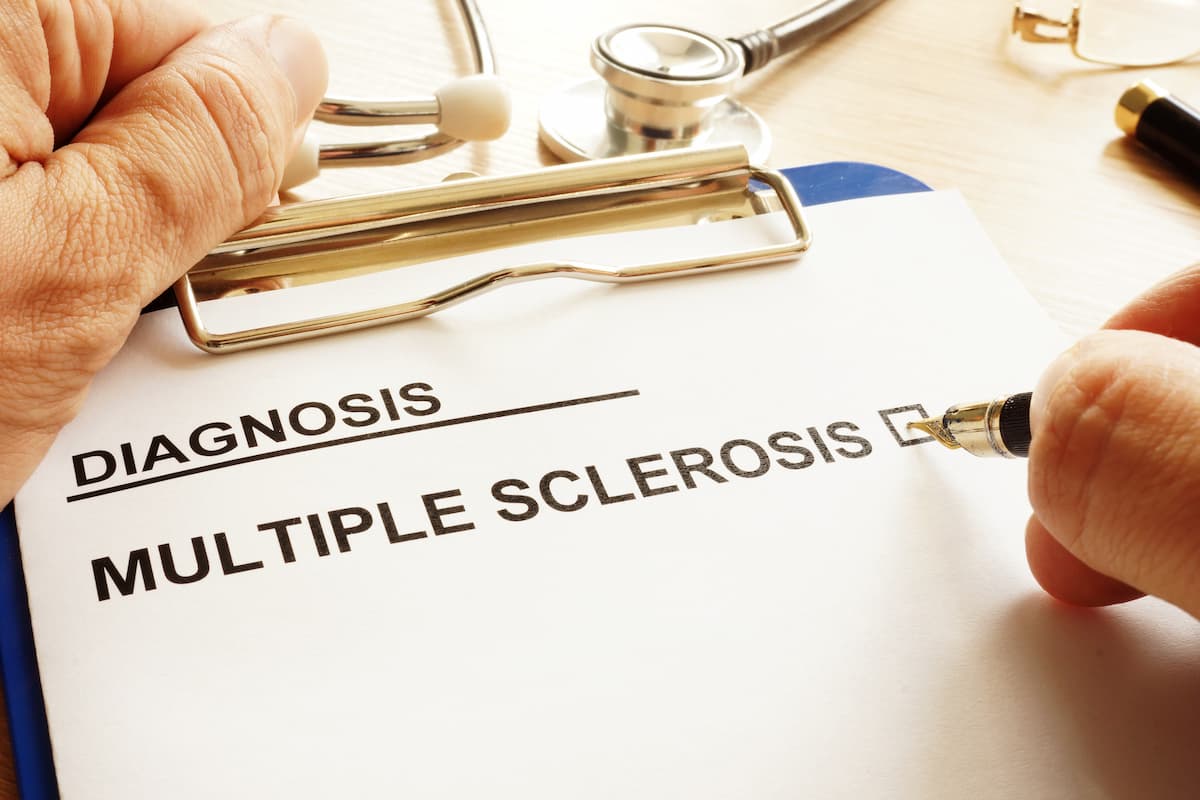- Center on Health Equity & Access
- Clinical
- Health Care Cost
- Health Care Delivery
- Insurance
- Policy
- Technology
- Value-Based Care
Microbial Imbalances, Structural Changes Linked With Olfactory Dysfunction in MS
Structural and microbial findings point to a potential nasal-brain immune connection in patients with multiple sclerosis (MS).
A new observational study published in Annals of Clinical and Translational Neurology reports that olfactory dysfunction, one of the more common yet underrecognized symptoms of multiple sclerosis (MS), may reflect microbial changes in the nasal mucosa rather than central inflammation alone.1 The study is the first to examine how nasal microbial composition and mucosal structure interact to influence olfactory performance in MS.
Smell loss affects roughly 30% to 40% of people with MS, yet its biological basis remains uncertain. | Image credit: Vitalii Vodolazskyi - stock.adobe.com

“The nasal cavity passes through the olfactory nerve to the CNS and is unprotected by the blood–brain barrier, providing a natural pathway for microbial dysbiosis after accidental bacteria and products enter the CNS directly,” the authors write. “Our results fill this gap, as there are no data directly targeting microbial sequencing of the nasal mucosa in MS.”
Researchers at Guizhou Medical University enrolled 42 patients with MS and 37 matched healthy controls (HC). After excluding participants with confounding factors such as smoking, nasal disease, or recent infection, 30 patients with MS and 30 controls were included in the analysis. Olfactory function was measured using the University of Pennsylvania Smell Identification Test (UPSIT). High-resolution MRI quantified superior turbinate volume, while 16S rRNA sequencing profiled the nasal microbiome to understand whether changes in mucosal structure and microbial diversity correlate with olfactory function.
Although none of the participants reported subjective smell loss, patients with MS scored significantly lower on UPSIT testing than controls (mean 27.87 vs 29.93; P = .027). Using a cutoff score of 28.5, the test distinguished MS from controls with 63% sensitivity and 60% specificity (AUC = 0.66; P = .031). UPSIT performance did not correlate with Expanded Disability Status Scale (EDSS) scores, relapse count, or disease duration (all P > .05).
Microbiome analyses in a subset revealed differences in composition between olfactory status groups. Overall, alpha diversity (Chao1) was higher among the MS participants with lower UPSIT (P = .004), and beta diversity differed between HC ≤28 and MS ≤28 (P = .033). In addition, Prevotella buccalis abundance was reduced in MS participants with impaired olfaction (P = .030), while Moraxella species were more abundant in HC with preserved olfactory function (P = .028). The reduced presence of Prevotella and increase in Proteobacteria mirror microbial trends seen in MS gut and brain tissue, reinforcing the idea of a “nasal-brain axis” connecting mucosal ecosystems and neuroinflammation.2,3
In functional pathway modeling, MS participants with higher olfactory scores showed enrichment in arachidonic acid metabolism and glycosylphosphatidylinositol (GPI) anchoring, both of which are relevant to neuroinflammation and olfactory signaling.1 Controls with lower UPSIT scores showed enrichment in bile secretion and aminoglycoside biosynthesis pathways.
MRI analysis revealed in healthy participants, larger superior turbinate volume correlated with higher UPSIT scores (P = .041), but this association disappeared in MS (P = .625). Within the MS group, superior turbinate volume correlated negatively with several opportunistic genera, including Cupriavidus, Methylobacterium-Methylorubrum, Ideonella, and Acinetobacter (all P < .05). The EDSS score and age both correlated positively with Dolosigranulum abundance (P = .006 and P = .016, respectively). “This indicates a close association between the nasal turbinate volume and the microbial composition,” the authors explain.
Smell loss affects roughly 30% to 40% of people with MS, yet its biological basis remains uncertain. This study adds evidence that nasal dysbiosis, not neuroanatomical loss alone, may contribute to sensory impairment and potentially serve as an early, noninvasive biomarker of disease activity.
While the authors caution that their findings are preliminary and limited by the small, single-center cohort, they emphasize the broader implications for MS research and monitoring. “These findings highlight the potential importance of the nasal mucosal microenvironment in olfactory function, particularly in the context of MS,” the authors conclude. “Larger, long-term studies with functional tests and predictive analyses are needed to clarify causal links and assess the diagnostic and treatment potential of nasal microbiota changes in MS.”
References
1. Gao Z, Danzhen Z, Li Y, Zhu J, Chu L, Yang Z. Exploring nasal structural-microbial interactions in multiple sclerosis-associated olfactory impairment. Ann Clin Transl Neurol. Published online September 16, 2025. doi:10.1002/acn3.70181
2. Nemati MH, Yazdanpanah E, Kazemi R, et al. Microbiota-driven mechanisms in multiple sclerosis: pathogenesis, therapeutic strategies, and biomarker potential. Biology. 2025;14(4):435. doi:10.3390/biology14040435
3. Tett A, Pasolli E, Masetti G, Ercolini D, Segata N. Prevotella diversity, niches and interactions with the human host. Nat Rev Microbiol. 2021;19(9):585-599. doi:10.1038/s41579-021-00559-y
